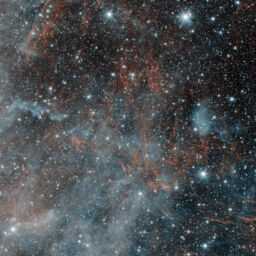In 1898, Sir William Ramsey and Morris Travers discovered Krypton along with 2 other noble gases. Krypton is called noble as it does not react with other gases under normal circumstances. After its discovery, Krypton has ran ahead to become a very in-demand chemical elements of various sectors starting from electronics to health. The functional properties of Krypton play an important role in enabling its very many uses for humans. However, in order to understand its uses the basis properties need to be understood.
Krypton Properties
Krypton is a noble gas with no color, odor, or taste. In the earth’s atmosphere, it is found in minute quantities which is proven by its presence of 1 part per million (PPM) in the air around us.
- It’s denoted by the symbol Kr with 36 as its atomic number in the periodic table of elements.
- Its melting point is 251.25 F and boiling point is -241.12 F.
- Krypton has atypical green and orange color from the spectral lines being emitted from it.
- Its structure is crystalline with face-centered cubic design like all other noble gases and has same constituents.
- In the beginning it was thought that Krypton is fully inert. However, Fluorine, which is in the list of the most reactive elements, was combined with Krypton to produce compounds like Krypton difluoride and Krypton tetrafluoride in 1963 shedding more light on the latter’s chemical behavior.
- Krypton is non-toxic asphyxiate and can harm humans with its potential to trigger narcosis.
Uses of Krypton
- Krypton has interesting uses in lighting systems. In everyday life, Krypton is used in lamps, advertising signs, billboards etc. Power consumption can be reduced by using fluorescent light in street lamps.
- Filament evaporation in incandescent light bulbs can also be curbed by using Krypton.
- MRI, magnetic resonance imaging, makes use of Krypton to get an image of airways.
- It’s very useful in foggy days to light the streets as its electrical generation capacity throws light to 1000 ft at least. The crucial task of aircraft navigation on runways is achieved by using the light of Krypton in deep fog.
- High speed professional or scientific photography uses it in the camera flash. Commonly, it is used in slides and movie projectors.
- In order to measure thermal capacity or quantity of heat in a substance, Krypton is used to develop ‘quasi-homogeneous electromagnetic calorimeters’.
- The most specific scientific, but common use of Krypton comes in defining a meter. This is done by heating Krypton-86 till it gives off a clear, bright reddish-orange line. A meter is measured by scientists as 1,650,763.73 times the exact width of this Kryptonic line.
The above properties and uses of Krypton make it a very important gas or chemical element. It is actually obtained by liquefying air through fractional distillation at a very high cost. The exorbitant cost deters various sectors from using it widely. New methods are being developed to obtain this gas in affordable ways for various purposes.
AUTOPOST by BEDEWY VISIT GAHZLY

